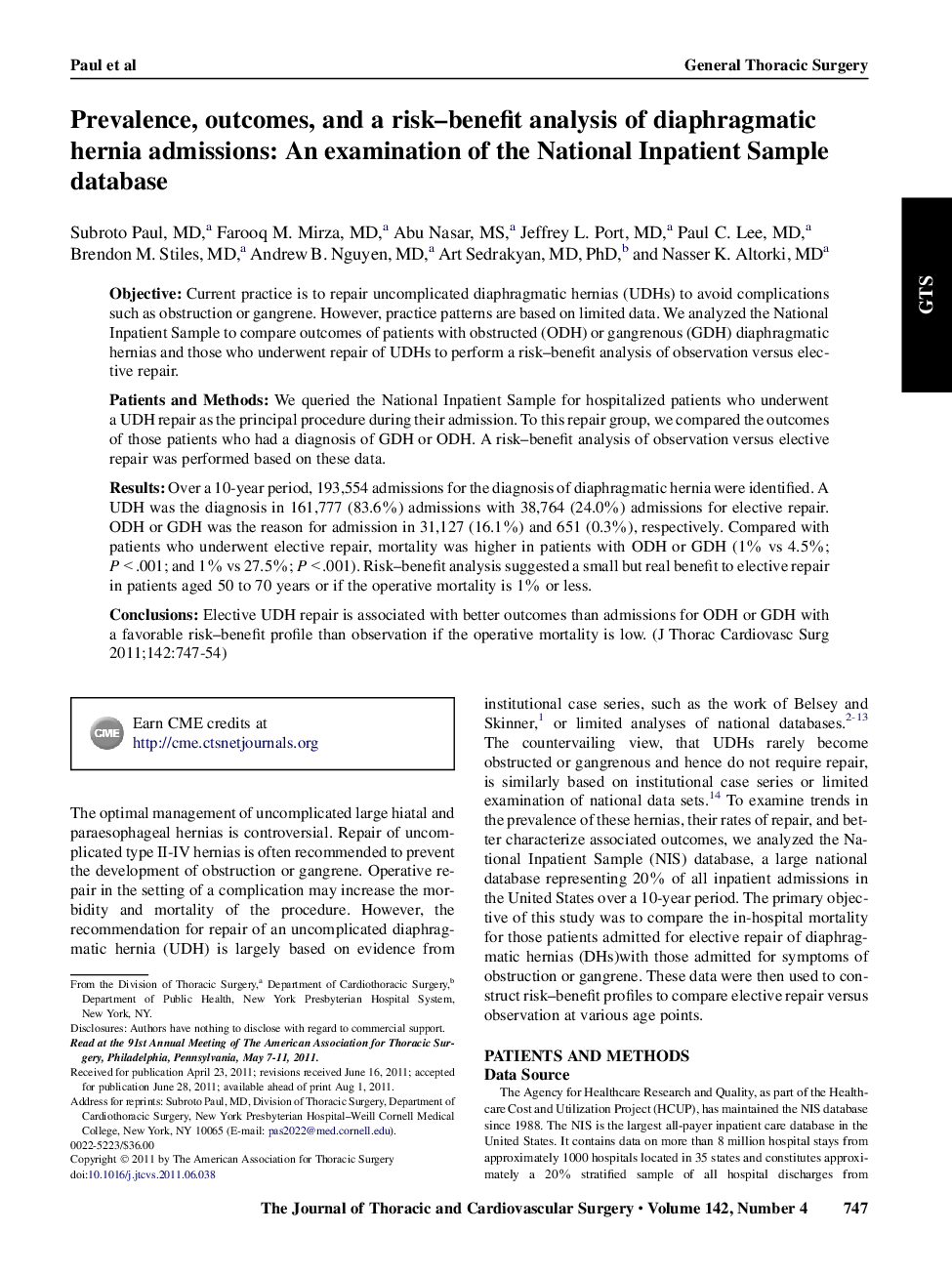| Article ID | Journal | Published Year | Pages | File Type |
|---|---|---|---|---|
| 2981852 | The Journal of Thoracic and Cardiovascular Surgery | 2011 | 8 Pages |
ObjectiveCurrent practice is to repair uncomplicated diaphragmatic hernias (UDHs) to avoid complications such as obstruction or gangrene. However, practice patterns are based on limited data. We analyzed the National Inpatient Sample to compare outcomes of patients with obstructed (ODH) or gangrenous (GDH) diaphragmatic hernias and those who underwent repair of UDHs to perform a risk–benefit analysis of observation versus elective repair.Patients and MethodsWe queried the National Inpatient Sample for hospitalized patients who underwent a UDH repair as the principal procedure during their admission. To this repair group, we compared the outcomes of those patients who had a diagnosis of GDH or ODH. A risk–benefit analysis of observation versus elective repair was performed based on these data.ResultsOver a 10-year period, 193,554 admissions for the diagnosis of diaphragmatic hernia were identified. A UDH was the diagnosis in 161,777 (83.6%) admissions with 38,764 (24.0%) admissions for elective repair. ODH or GDH was the reason for admission in 31,127 (16.1%) and 651 (0.3%), respectively. Compared with patients who underwent elective repair, mortality was higher in patients with ODH or GDH (1% vs 4.5%; P < .001; and 1% vs 27.5%; P < .001). Risk–benefit analysis suggested a small but real benefit to elective repair in patients aged 50 to 70 years or if the operative mortality is 1% or less.ConclusionsElective UDH repair is associated with better outcomes than admissions for ODH or GDH with a favorable risk–benefit profile than observation if the operative mortality is low.
